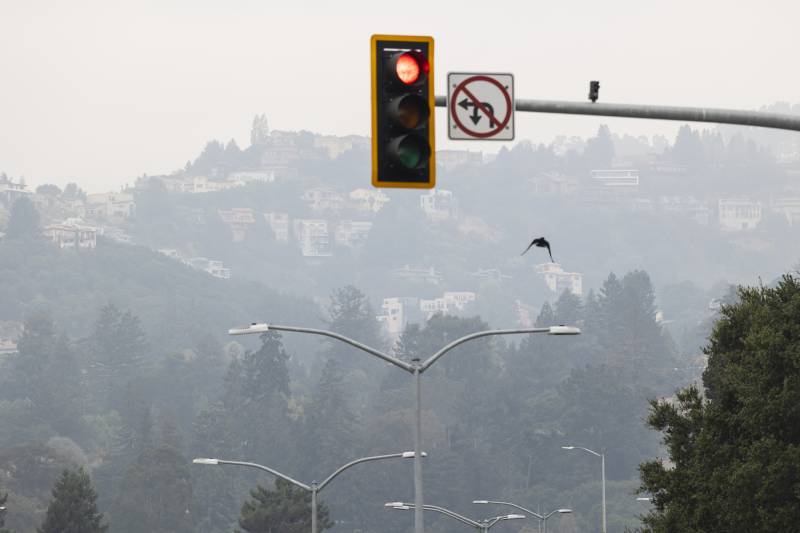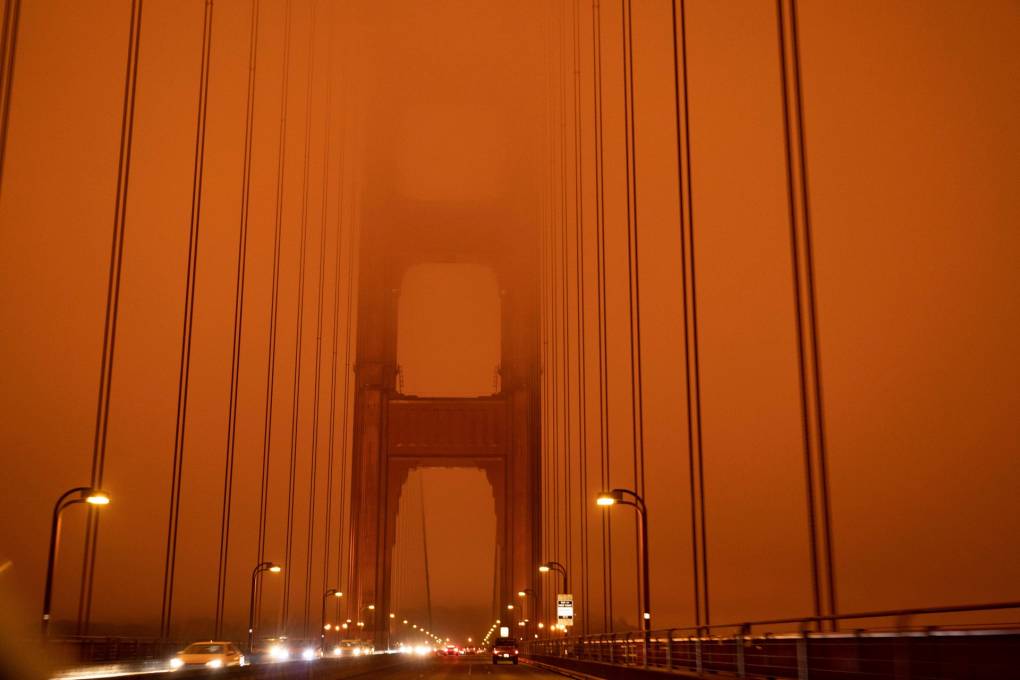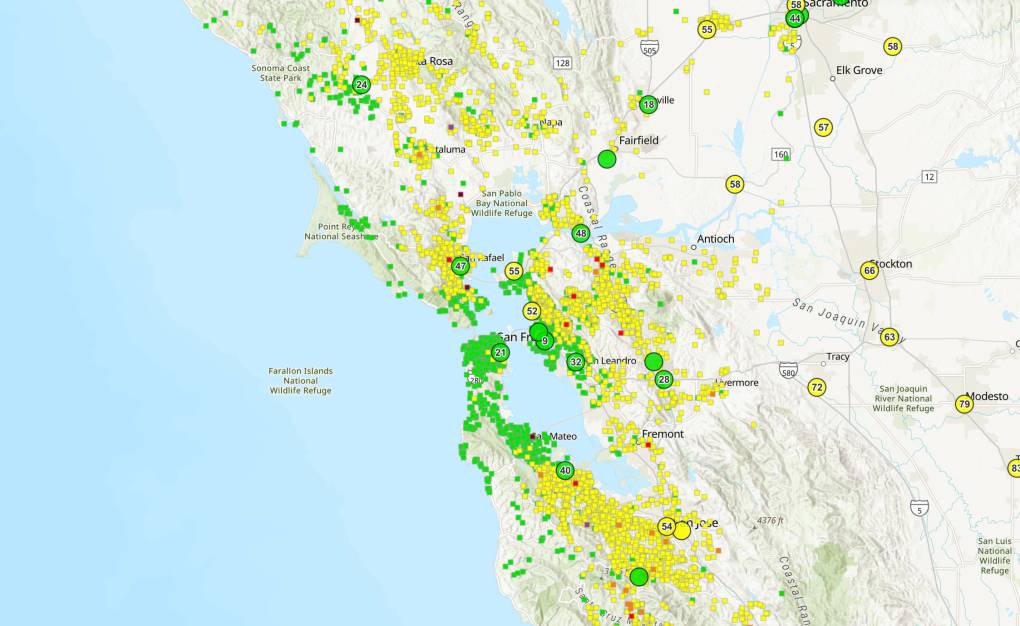“Yesterday, the impact began around noon over the north bay,” said Duc Nguyen of the Bay Area Air Quality Management District at a press conference Wednesday morning. “As the day progressed, more dense plumes from over the ocean entered the Golden Gate and filtered out across the Bay Area.”
Spare the Air alerts are issued if pollution reaches unhealthy levels. The alert puts into effect a ban on burning wood, manufactured fire logs or other solid fuel indoors and outdoors. It also encourages people to decrease their driving and to protect their health by staying indoors.
During wildfires, air quality officials look for dangerous levels of particulate matter in the air, known as PM2.5. The amount of pollutants and particulate matter is measured on an air quality index, known as the AQI. As of 10 a.m. on Wednesday morning, the AQI for parts of the Bay Area had reached above 150, categorized as “unhealthy” levels.
Health experts are advising people in affected areas to keep outdoor activities short and light, and stay indoors with windows closed if possible. This is especially true for sensitive groups, such as people with heart or lung disease, older adults, children and pregnant people.
Smoke can irritate the eyes and airways. Coughing, a dry scratchy throat and irritated sinuses are common symptoms from overexposure to unhealthy air, and it can trigger wheezing in those who suffer from asthma, emphysema or COPD.


